Search Results
Student Handout
Image


3, 4, 5, 6, Elementary (3-5), Intermediate (6-8)
Goldy Locks comes to terms with intellectual property, copyright and plagiarism. Students determine the central lesson of the story and create their own derivative work.
Lesson Plan
Image


3, 4, 5, 6, Elementary (3-5), Intermediate (6-8)
Goldy Locks comes to terms with intellectual property, copyright and plagiarism. Students determine the central lesson of the story and create their own derivative work.
Student Handout
Image


4, Elementary (3-5)
Students learn how to demonstrate ethical use of Intellectual Property. They examine the concepts of Intellectual Property (IP), plagiarism, and piracy through disussion and exercises.
Student Handout
Image


4
Students understand that plagiarism means to copy another person's original work and claim it as your own. They learn that, by citing their sources, they give credit where credit is due. Students practice citing online sources.
Lesson Plan
Image


4
Students understand that plagiarism means to copy another person's original work and claim it as your own. They learn that, by citing their sources, they give credit where credit is due. Students practice citing online sources.
Teacher Reference Page
Image


4, Elementary (3-5)
Students understand that digital media such as photos, images, videos, movies, music files and apps are forms of intellectual property. They learn that piracy means to illegally download, copy and distribute digital media; a form of theft.
Student Handout
Image


4, Elementary (3-5)
Students understand that digital media such as photos, images, videos, movies, music files and apps are forms of intellectual property. They learn that piracy means to illegally download, copy and distribute digital media; a form of theft.
Teacher Reference Page
Image


4
Students review vocabulary terms associated with intellectual property. They learn that copyright laws protect material found online.
Student Handout
Image


5, Elementary (3-5)
Students practice paraphrasing and citing online sources. They read informational text from an online source and write an objective summary. They then cite the online source of information using the correct format.
Lesson Plan
Image


5, Elementary (3-5)
Students practice paraphrasing and citing online sources. They read informational text from an online source and write an objective summary. They then cite the online source of information using the correct format.
Multimedia Resource
Image


5, Elementary (3-5)
Students come to understand the value of intellectual property. They acquire and use domain-specific key terms, and practice ethical decision-making regarding music piracy, plagiarism, and copyright infrigement in a number of scenarios. Students learn how to identify copyright materials, cite their sources and demonstrate respect for others' creative rights. Students produce and publish a PSA. Multimedia resources and activities feature Donny the Downloader.
Lesson Plan
Image


6, Intermediate (6-8)
Students learn to prevent plagiarism. They practice paraphrasing information found on the Web and correctly citing online sources.
Student Handout
Image


6, Intermediate (6-8)
Students define the problem of plagiarism and identify the consequences for claiming another person's work as one's own. They identify ways to prevent plagiarism through paraphrases, direct quotes, source citations and footnotes. Students learn to correctly apply fair use exceptions by examining a series of scenarios. They then create a list of tips to prevent plagiarism and to show respect for intellectual property found online.
Teacher Reference Page
Image


6, Intermediate (6-8)
Students define the problem of plagiarism and identify the consequences for claiming another person's work as one's own. They identify ways to prevent plagiarism through paraphrases, direct quotes, source citations and footnotes. Students learn to correctly apply fair use exceptions by examining a series of scenarios. They then create a list of tips to prevent plagiarism and to show respect for intellectual property found online.
Student Handout
Image


6, Intermediate (6-8)
Students define the problem of plagiarism and identify the consequences for claiming another person's work as one's own. They identify ways to prevent plagiarism through paraphrases, direct quotes, source citations and footnotes. Students learn to correctly apply fair use exceptions by examining a series of scenarios. They then create a list of tips to prevent plagiarism and to show respect for intellectual property found online.
Lesson Plan
Image


6, Intermediate (6-8)
Students closely read information text about the impact of piracy on creative industries. They analyze the issue of intellectual property theft from various viewpoints through role play. Students develop empathy for those that are impacted by piracy. They consider the laws and solutions to this problem, and they then create a poster or Web page to raise awareness and educate others about online piracy.
Lesson Plan
Image


6, Intermediate (6-8)
Students closely read information text about the impact of piracy on creative industries. They analyze the issue of intellectual property theft from various viewpoints through role play. Students develop empathy for those that are impacted by piracy. They consider the laws and solutions to this problem, and they then create a poster or Web page to raise awareness and educate others about online piracy.
Lesson Plan
Image


6, Intermediate (6-8)
Students understand that intellectual property is created in the mind, yet, once in tangible form, creative works are protected by law. They identify types of intellectual property found online. They use a graphic organizer to prepare for persuasive writing. Students create a Public Service Announcement with a persuasive message supporting intellectual property rights.
Student Handout
Image


7, Intermediate (6-8)
Students come to understand that intellectual property has value. They examine the laws that protect creative works from being copied, distributed, performed or changed without proper permission from the rights holder. Students determine the real-world consequences for copyright infringement including piracy and plagiarism. They consider the privacy, security, safety and legal risks associated with Peer-to-Peer (P2P) file-sharing technology. Students use what they have learned to educate others to respect ownership rights in an online culture by producing a Public Service Announcement.
Student Handout
Image


7, Intermediate (6-8)
Students come to understand that intellectual property has value. They examine the laws that protect creative works from being copied, distributed, performed or changed without proper permission from the rights holder. Students determine the real-world consequences for copyright infringement including piracy and plagiarism. They consider the privacy, security, safety and legal risks associated with Peer-to-Peer (P2P) file-sharing technology. Students use what they have learned to educate others to respect ownership rights in an online culture by producing a Public Service Announcement.


 ,
Ethics
Theme Image
Image
,
Ethics
Theme Image
Image
 ,
Media & Information Literacy
Theme Image
Image
,
Media & Information Literacy
Theme Image
Image

 ,
Ethics
Theme Image
Image
,
Ethics
Theme Image
Image
 ,
Security
Theme Image
Image
,
Security
Theme Image
Image
 ,
Ethics
Theme Image
Image
,
Ethics
Theme Image
Image